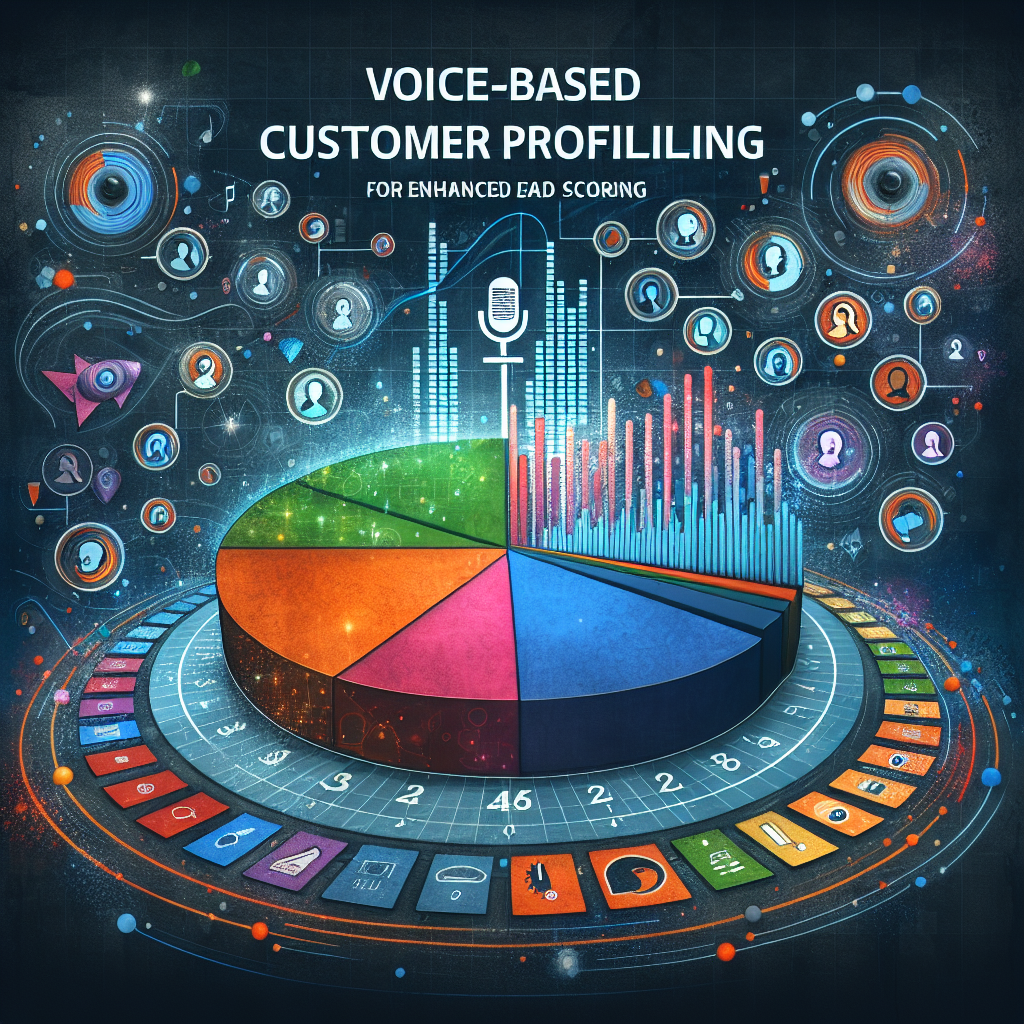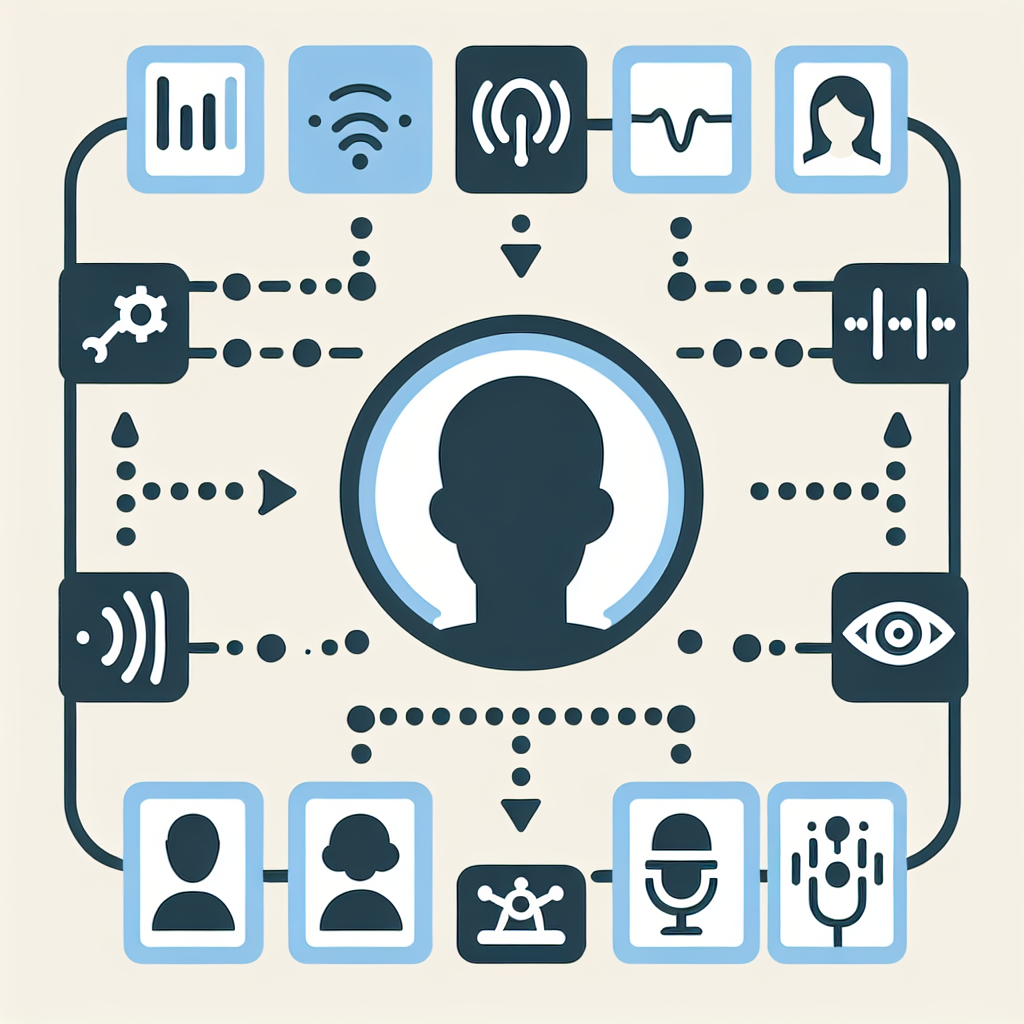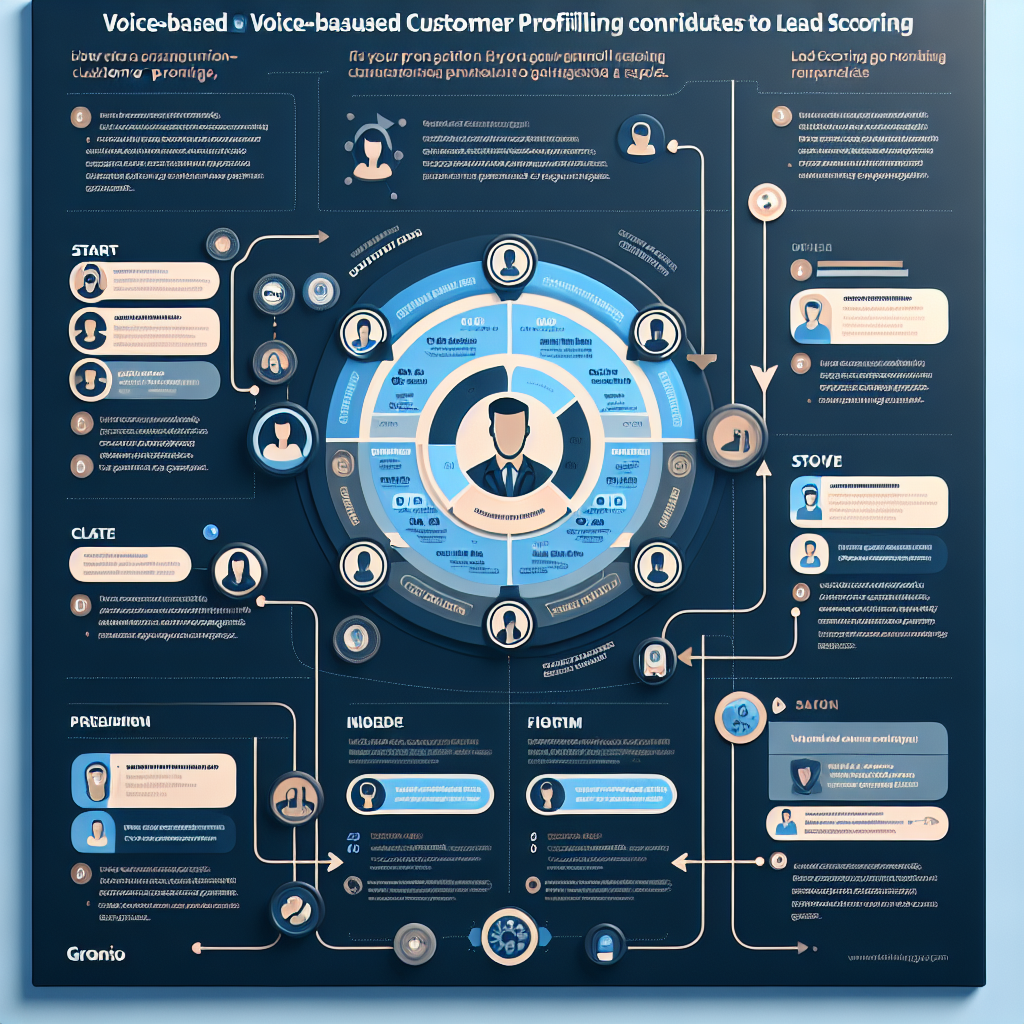
In a business world where data is king, every move is about capturing more actionable insights. Among the vast pool of data able to churn out valuable information, voice stands out as surprisingly potent, yet under-utilized. Emerging technologies in voice recognition and Artificial Intelligence (AI) are transforming the way companies interact with their customers and score their leads. This is where the concept of Voice-Based Customer Profiling steps in.
Profound advances in voice recognition systems have empowered companies to assess and collect nuanced data about customers’ needs, desires, and identities from their spoken language. This innovative tool not only provides a better understanding of customer behavior but also aids in improving lead scoring.

As we delve deeper into the digital age, enhancing customer experience has taken the prime focus in business strategies. Voice-Based Customer Profiling harnesses the power of voices in smart ways to enhance personalization and deliver greater business value. It has been paving its way to become a crucial part of any Customer Relationship Management (CRM) system, redefining the very landscape of marketing and customer interactions.
Fundamentally, Voice-Based Customer Profiling collects and analyzes data obtained from customer interactions to create comprehensive customer profiles. This shines light on their preferences and behavior patterns, and can significantly strengthen lead scoring models. This detailed information assists companies in focusing their efforts on the prospects most likely to convert, optimizing marketing campaigns and expediting business growth.
Indeed, in this era of digital transformation, businesses willing to leverage voice data to enhance their lead scoring process have much to gain from the sophisticated field of Voice-Based Customer Profiling.
Voice-based customer profiling, a rapidly advancing field within customer analytics, presents a wealth of potential benefits for businesses, especially in the realm of lead scoring. At its core, this technology hinges on two primary workflows: speech recognition and sentiment analysis.
The initial step in voice profiling begins with speech recognition, which fundamentally operates by transforming human speech (typically captured over phone or via digital voice assistants) into written text. Various algorithms and software voice recognition algorithms dive deep into the text transcriptions, picking out key phrases and words. For example, repeated inquiries about a specific product or service could signify deeper interest and result in the lead being assigned a higher score.
Next comes sentiment analysis, an equally critical component of voice profiling. Instead of focusing on what is being said, sentiment analysis digs into how something is said, tracking variables like tone, speed, volume, and inflection. It's a human instinct to discern emotion from speech; sentiment analysis algorithms combine natural language processing, text analysis, and computational linguistics techniques to identify, extract, and quantify the customer's emotional states and subjective information from their voice data. Here is an interesting article on how sentiment analysis works. By understanding a lead's emotional context, companies can enhance their outreach strategies and improve overall customer engagement.
Together, speech recognition and sentiment analysis form a potent combination facilitating voice-based customer profiling. This innovative approach provides organizations with vital insights into customer preferences, interests, and emotions, thus empowering them to enrich customer interactions, improve lead scoring accuracy, and drive sales growth. The future certainly seems voice-powered!
As part of the digital transformation wave, voice-based customer profiling is increasingly gaining momentum in lead generation and customer servicing. This innovative approach benefits businesses significantly, enabling them to optimize lead qualification, devise personalized marketing strategies, and enhance their customer service efforts.
Lead scoring, a critical measure that helps businesses prioritize potential clients, can be vast improved through voice-based customer profiling. Utilizing nuances from a customer's voice such as tone, emphasis, and speaking pace, this modern form of lead qualification can help delineate more promising prospects from less likely ones. An advanced form of profiling like this can increase conversion rates and augment ROI.

Voice-based customer profiling also enables businesses to implement personalized marketing strategies. By understanding the intricacies of a customer's voice profile, businesses can tailor their marketing efforts in a more targeted approach, resulting in better customer engagement and increased sales.
Finally, improved customer service is another tangible plus of this type of profiling. Service representatives can use voice characteristics identified from this method to immediately recognize customers. This immediate recognition facilitates personalized service experiences, making customers feel valued and ultimately driving customer loyalty.
All in all, the benefits of implementing voice-based customer profiling within your business strategy are multitudinous. It offers a smarter, more personal way of deciphering potential leads, crafting marketing approaches, and delivering exceptional customer service.
In this digital era, customer engagement has become a significant factor influencing businesses' success. Personalizing the customer experience creates solid brand loyalty and helps develop lasting relationships. A revolutionary method in customer engagement involves voice-based customer profiling.
Voice-based customer profiling is a technology that uses Artificial Intelligence (AI) to analyze a customer's voice. It gauges customer sentiment, gathers data on speech patterns, and evaluates communication nuances. The integration of voice profiling with CRM platforms provides deeper insights into customer behavior, helping businesses adapt and offer more personalized service.
The crucial first step to integrate voice profiling with your CRM system involves selecting the right voice recognition technology for your needs. Several voice recognition technologies are available that are specifically designed to interact seamlessly with existing CRM frameworks.
Once chosen, the software is integrated with the CRM system to start data collection. In the integration process, AI algorithms work continuously to analyze voice inputs and transfer them into actionable data. This data, when paired with existing client profile data, enriches lead scoring mechanisms.
Lead scoring, a method used by organizations to rank potential customers against a scale representing the perceived value each lead holds for the organization, is significantly enhanced with voice profiling. With voice-based customer profiling, you can further understand your customers, achieving an enhanced lead scoring model.
In essence, integrating voice recognition technologies with your CRM system bridges the gap between data processing and building meaningful, personalized relationships. As CRM systems become more interconnected with modern technologies, voice profiling is poised to change the dynamic of lead scoring radically by offering nuanced insights into customer behavior.
As advances in artificial intelligence continue to drive progress in voice recognition technology, more businesses than ever are using voice-based customer profiling to enhance their marketing efforts and better understand their ideal customer base. These developments are having a significant impact on lead scoring, providing further insight into prospective customers to better drive sales. We'll take a look at two notable case studies for a closer look at how this technology is reshaping businesses.

The first example is that of Nestlé, which integrated a voice-based profiling system to improve customer engagement and sales. The system captured data from customer calls, identifying their emotions, tone, intentions, and more. The profiling system was then used to place each customer into segments, subsequently defining the ideal approach for each segment. One key result was an impressive 15% improvement in customer satisfaction scores, and an increased resolution rate on the first contact.
Another standout case is Humana, an American health insurer that implemented voice profiling into their customer service operations. By analyzing millions of calls, Humana was able to develop more accurate customer profiles and thereby refine their lead scoring process. With this approach, Humana enhanced their customer satisfaction rate, reduced their average handle time, and witnessed a remarkable 28% increase in first call resolution.
The success stories of companies like Nestlé and Humana lend credence to the power and potential of voice-based customer profiling. By leveraging AI to analyze voice data, businesses can develop a better understanding of their customer base and shape their marketing strategies accordingly. Ultimately, this empowers them with the ability to improve their lead scoring methods and serve their customers better, leading to improved sales and customer satisfaction.
As we delve into a more digitized era, Voice-Based Customer Profiling appears primed to revolutionize the world of Lead Scoring. Profiting from advancements in artificial intelligence and machine learning, this technology's capacities extend beyond voice recognition to boasting an increase in sales by facilitating profound customer insights. Discussions on the future prospects of Voice Profiling indicates an evolving landscape with promising shifts in business analytics.
Firstly, Emotional Analytics or Emo-Analytics constitutes an integral part of the future trends. This implies the application of sentiment analytics to voice data, meaning companies can use tone, stress levels, and speech speed to gauge a customer's sentiments, thereby improving response strategies. Secondly, localization will gain precedence in voice-based profiling as a means to enhance customer experience. This technology, as it advances, will become savvy in detecting and understanding accents, cultural nuances, and dialects, promoting personalized interactions in real-time.
Furthermore, accent recognition facilitates a more personalized customer experience by tailoring services based on the location and preference of individuals. Studies hint at a future where voice-profiling can almost act as a personality test, enhancing customer profiling and the overall user experience. Last, but not the least, with rising concerns about virtual security, voice biometrics for customer identification paints an inevitable part of the future of voice profiling. Research suggests that voiceprints are unique enough to be used for identification purposes, reinforcing trust in an era rife with data breach cases.
Undeniably, Voice-Based Customer Profiling stands as a steadfast pillar in shaping the future of lead scoring by altering the way businesses approach their customers. As we look forward, one can anticipate further integration of this technology across multiple industries for its potential to provide unprecedented insights into customer behavior and preferences.
Start your free trial for My AI Front Desk today, it takes minutes to setup!








